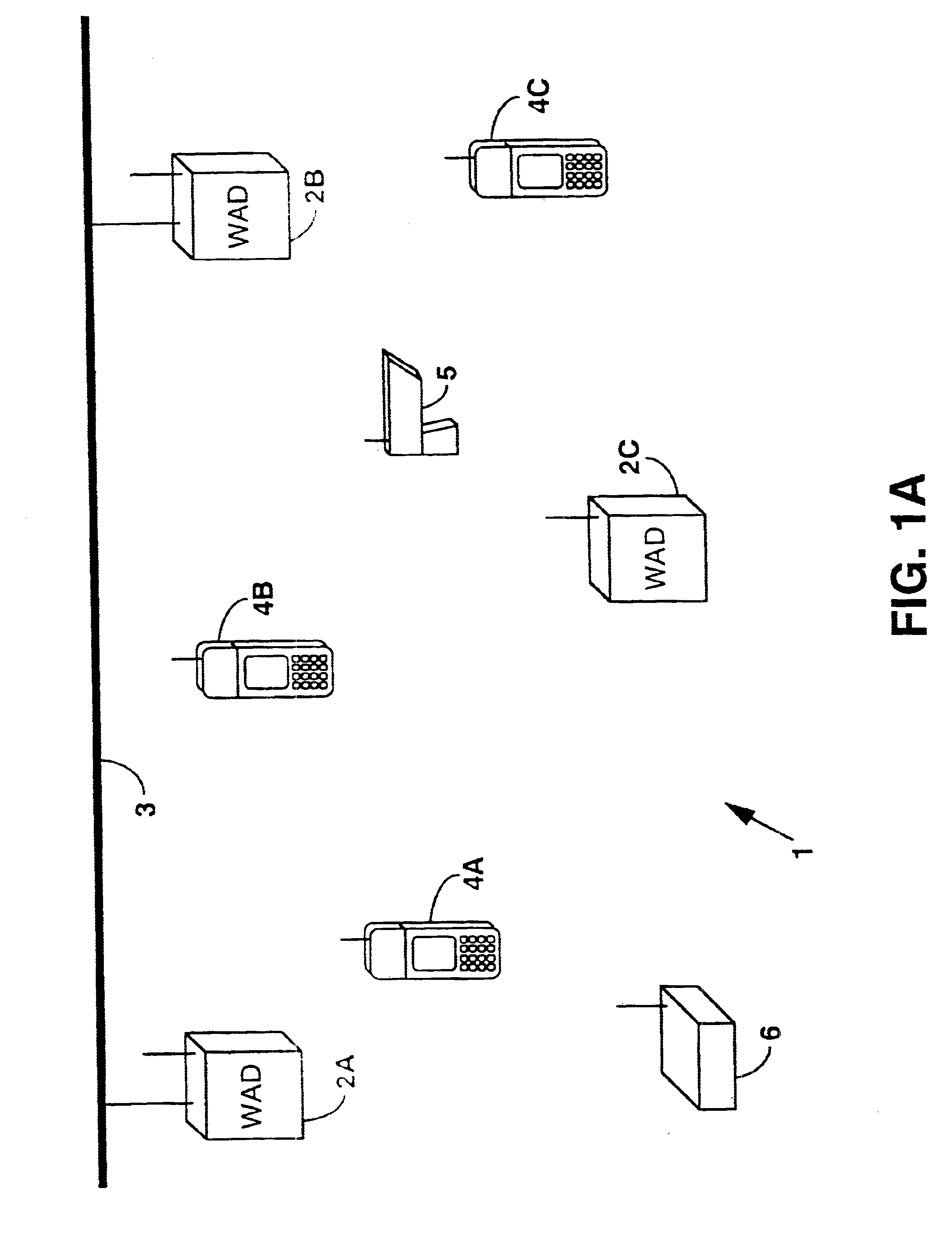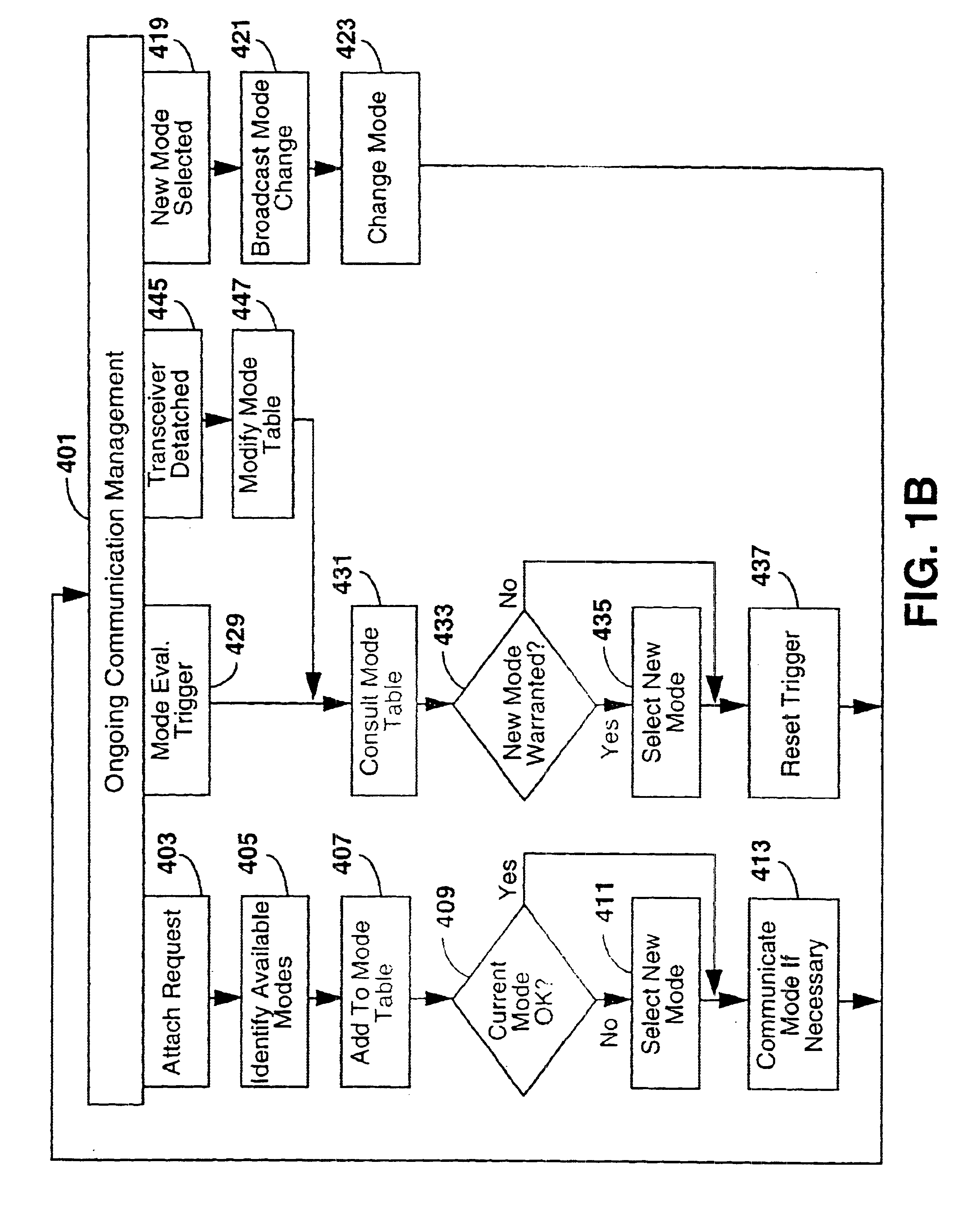Because hard-wiring a
local area network within a large, dynamic facility is both expensive and difficult, the wireless local are network provides traditional network functions as well as additional functions
germane to the wireless attributes of the network.
However, due to difficult transmission and interference conditions within a factory, establishing and maintaining sufficient wireless communication ties oftentimes proves difficult.
Attenuation of transmitted signals, multi-path
fading, ambient
noise, and interference by adjacent cells often disrupts communication within the wireless
local area network.
Operation in ISM bands is unlicensed and uncoordinated, so equipment operating in these bands must be designed to operate successfully without knowledge of the types of devices that may be used in close proximity.
Wide bandwidth modulation is reasonably resistant to low or moderate levels of interference, but even systems with relatively high process gains experience difficulties when subject to strong interference.
In practice, implementation constraints dictate that this
system uses the full 26 MHz band.
Spread spectrum communications may not be appropriate for some applications.
However, after installation, if communication traffic or local
noise increases, the communication might fail to function as required.
Likewise, after installation, if RF barriers are installed or if the network is moved to an
urban environment with a great deal of
noise from neighboring installations, cellular and mobile phones, etc., the network may fail to meet the needs of the customer.
However, a customer's needs continually change, and, if the particular application or environment were to change justifying a different
spread spectrum modulation technique, the customer is either forced to change all of their radio transceivers or live with the under-performance they currently receive.
In such networks, a single radio
transceiver design can never provide optimal performance in all areas.
Because each wireless local
area network may have been designed for a particular set of criteria with particular spread spectrum operational abilities, mobile units may be non-functional within particular wireless local area networks.
However, when the portable transceiver unit 4B for example passes from one
cell to another, it cannot communicate with a neighboring wireless access device without changing its operating characteristics.
Such rapid fluctuations can result in the loss of data if the amplitude of the received
signal falls below the sensitivity of the
receiver.
If a transmission of a data packet can be initiated and completed before the relative movement between the
receiver and
transmitter exceeds the "small distance"
data loss to
fading is unlikely to occur.
If the
signal strength samples decrease in value, it is likely that
fading is present in the network.
Although it may result in improved communication, increasing the frequency or length of the spreading-code requires additional overhead which may not be justifiable unless necessary.
Although such adjustment does not eliminate the effects of fading, it increases the probability that the characteristics of the channel will remain consistent during each hopping frame.
For example, selecting
interleaving and coding, through their respective parameters, might result in a more complex combination scheme which combines segmentation and error correction in some alternate fashion.
For localized operation is a fixed location, however,
transmitter power output may be limited to two watts, maximum, and limitations may be placed on antenna height as well.
However, the channel bandwidth constraints limit the maximum data "high"
data rate that can be utilized for transmitting NRZ coded data.
Because the
receiver decision circuitry must distinguish between three instead of two levels, there is a signal to noise (range) penalty for using PR encoding.
In this embodiment, however, the overall delays in the
system may still justify upgrading the radio transceiver(s) causing the limitations.
 Login to View More
Login to View More  Login to View More
Login to View More 


